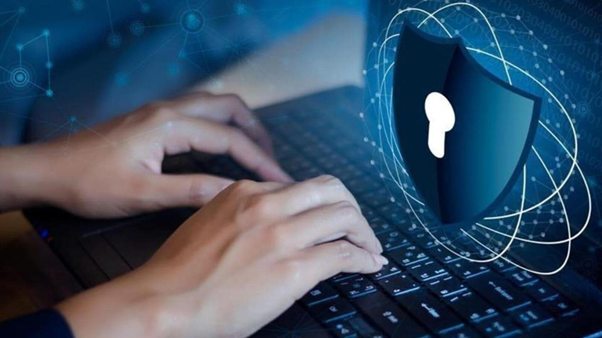PHISHING ATTACK
WHAT IS PHISHING ATTACK?
Phishing
attack is a strategic method of deception used by attackers to manipulate
individuals into disclosing confidential information or performing actions that
compromise security.
Email Phishing Attack
An email phishing attack is a type of cyber attack where attackers send deceptive emails to trick recipients into divulging sensitive information or performing actions that compromise security. Here's a detailed
Definition:
An
email phishing attack is a fraudulent attempt by cybercriminals to deceive
individuals into providing confidential information, such as login credentials,
financial data, or personal details, by posing as a legitimate entity. These
attacks exploit social engineering techniques and are typically carried out via
email, although they can also be conducted through other communication channels
Key Characteristics:
1. Deceptive
Emails: Phishing emails are crafted to appear as though they
come from a trustworthy source, such as a reputable company, a bank, or a known
contact. The email often mimics the branding, tone, and style of the legitimate
organization to appear authentic.
2. Urgent
or Alarmist Language: The emails frequently use urgent or
alarming language to create a sense of immediate action. This can include
threats of account suspension, security breaches, or other pressing issues
designed to prompt a quick response.
3. Fake
Links and Websites: Phishing emails often contain links to
counterfeit websites that closely resemble legitimate ones. These fake sites
are designed to capture sensitive information entered by the victim, such as
usernames, passwords, or credit card details.
4. Malicious
Attachments: Some phishing emails include attachments
that, when opened, can install malware on the recipient's device. This malware
may be used to steal information, monitor activity, or further compromise the
system.
5. Social
Engineering Techniques: Attackers use social engineering
tactics to make their emails more convincing. This may involve using personal
information about the recipient, such as their name, job title, or recent
activities, to increase the likelihood of a successful attack.
6. Impersonation:
The email often appears to come from a well-known or trusted entity, such as a
bank, email provider, or service provider, in an attempt to trick the recipient
into believing the request is legitimate.
Objectives:
·
Information Theft:
To obtain sensitive information such as login credentials, financial details,
or personal identification information.
·
Financial Gain:
To exploit stolen information for financial transactions or identity theft.
·
Malware Distribution:
To install malicious software on the victim’s device, which can lead to further
security breaches or data loss.
Prevention
Measures:
1. Implement Technical Safeguards
·
Use Anti-Phishing Tools:
Employ email security solutions that include anti-phishing filters and threat
detection. These tools can automatically identify and block phishing emails or
flag them for review.
·
Enable Multi-Factor Authentication
(MFA): MFA adds an additional layer of security by
requiring users to provide a second form of verification (e.g., a code sent to
their phone) in addition to their password. This helps protect accounts even if
credentials are compromised.
·
Keep Software Updated:
Ensure that all operating systems, email clients, and security software are
kept up-to-date with the latest patches and updates. This helps protect against
known vulnerabilities that phishing attacks might exploit.
·
Use Email Encryption:
Encrypt sensitive emails to protect their content from unauthorized access.
This is particularly important for communications that involve confidential
information.
·
Implement Domain-Based Message
Authentication (DMARC): DMARC, along with DomainKeys
Identified Mail (DKIM) and Sender Policy Framework (SPF), helps prevent email
spoofing and ensures that emails sent from your domain are authenticated.
2. Educate and Train
Users
·
Conduct Regular Training:
Provide regular training sessions for employees or users on how to recognize
phishing attempts. Use real-life examples and simulations to illustrate common
tactics used by attackers.
·
Promote Awareness:
Educate users about the signs of phishing emails, such as suspicious URLs,
urgent language, and unexpected attachments. Encourage them to verify any
unusual requests through a trusted channel.
·
Encourage Caution:
Teach users to be skeptical of unsolicited emails, especially those requesting
sensitive information or prompting them to click on links or download
attachments.
3. Adopt Best Practices
·
Verify Requests:
Advise users to independently verify any request for sensitive information or
actions that come through email. This can be done by contacting the requester
through a known and trusted method, such as a phone call or direct message.
·
Use Strong, Unique Passwords:
Encourage the use of strong, unique passwords for each account. A password
manager can help users manage and generate complex passwords.
·
Monitor and Respond:
Set up monitoring for unusual or suspicious email activity. Establish a
response plan for handling phishing incidents, including procedures for
reporting and mitigating the impact.
·
Implement Role-Based Access Controls:
Limit access to sensitive information based on user roles and responsibilities.
This minimizes the potential damage in case of a successful phishing attack.
4. Verify Email
Authenticity
·
Examine Email Headers:
Check email headers to verify the authenticity of the sender. This can reveal
if the email is coming from a legitimate source or has been spoofed.
·
Inspect URLs:
Hover over links to see the actual URL before clicking. Ensure that the link
directs to a legitimate website and not a counterfeit one.
·
Check for SSL Certificates:
Ensure that websites accessed through email links use HTTPS and have a valid SSL
certificate to encrypt data transmitted between the user and the site.
5. Report and Take Action
·
Report Phishing Attempts:
Encourage users to report suspected phishing emails to IT or security teams.
Use reporting tools provided by email services or security software.
·
Take Immediate Action:
In case of a suspected phishing attack, act quickly to contain and mitigate the
impact. This may include changing passwords, notifying affected parties, and
performing a security audit.
CREATED
BY:
LINGESAN S G II BCA 23UCA020
COORDINATED BY:
Dr. M. JAIKUMAR
SOURCE:
https://www.cisco.com/c/en_in/products/security/email-security/what-is-phishing.html





Comments
Post a Comment